Standard Curtain Lengths: A Guide For Styling And Measuring Curtains And Drapes
Measuring Curtains and Some Rules To Guide You
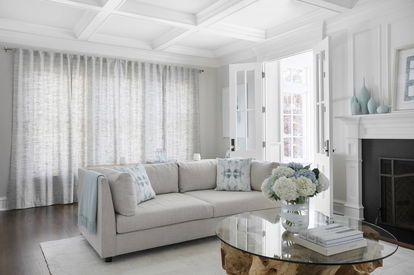
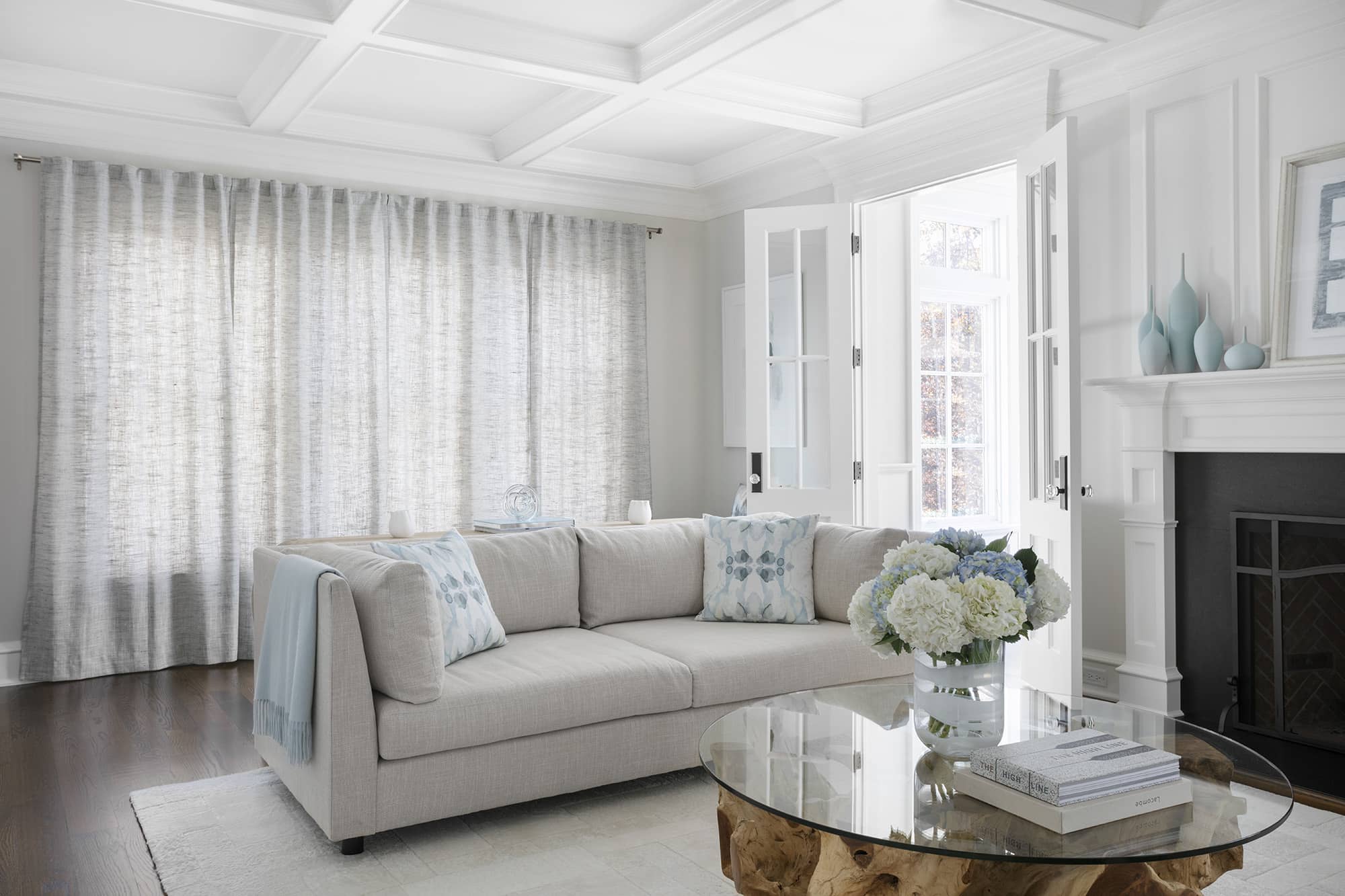
If you're looking to update your space with new curtains or drapery, you've got some choices to make. There isn't a hard and fast rule on the length your drapes should be or the amount of light they should block - but there are some best practices you can follow. While some people think that covering the entire height of the wall is necessary, the truth is that the right curtain length depends on your needs, preferences, and decor style. In this article, we'll guide you through standard curtain lengths, current curtain and drapery trends, and tips for measuring for length and width.
Standard Curtain Lengths
Your curtains must be longer than the window they are covering -- after that the rules of covering your windows with curtains or drapes are pretty loose. Ask a design consultant at Blinds To Go and they will suggests you mount your curtain for rod a minimum 6 inches above the window and 6 six inches past the bottom window sill, if it is a window, or to just above the floor if you are covering a sliding glass door, french door, or a tall window that extends to the floor. We suggest that you decide where you will mount your curtain rod first and then choose the final length of the curtains based on how close you want them to the ground. If your window extends up to the ceiling you may not have enough room to hang your rod 6" above the window frame, which is fine. For tall windows that won't have room for a rod to be mounted 6 inches above the window or trim, we suggest either mounting the rod right below the crown molding, or as high as possible if there is no molding. Ceiling mount is another great option for windows that are very tall or very high. With a ceiling mount the brackets that hold your curtain rod in place are mounted directly above where you want the rod. Ceiling mount is used for mounting inside a top window frame as well as on ceilings.
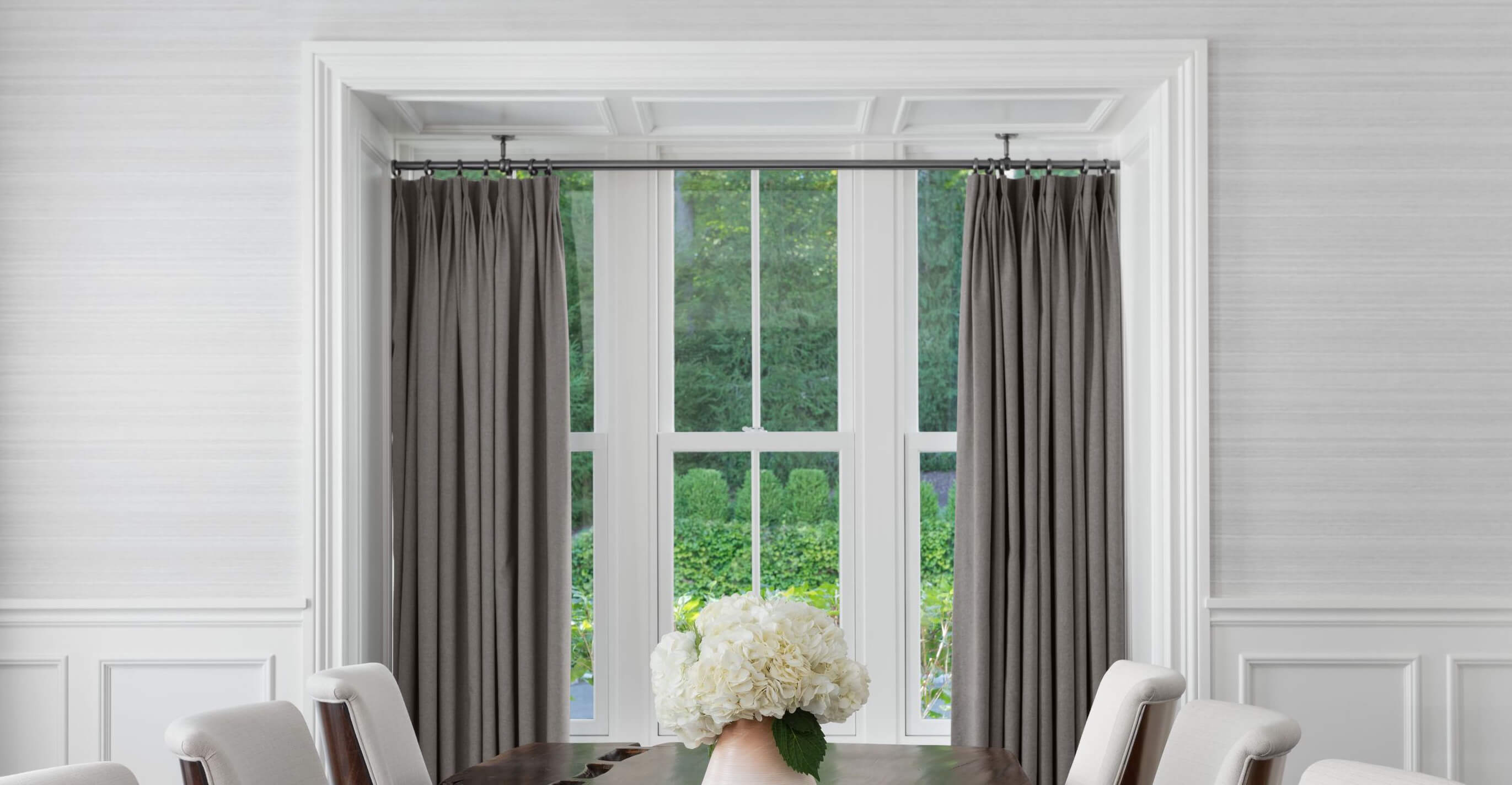
Drapes with rings and pinch pleats hang from a ceiling mount rod.
Curtain Length Trends
If you're buying custom curtains for decorative purposes you may be interested to know that maximum length is trending. Floor to ceiling curtains and drapes have gained popularity in the design world recently because they make any space feel taller and grander. For the floor to ceiling look your drapes or curtains should just barely "kiss" the ground, either touching or hovering a centimeter above the flooring. If you have molding that you want to showcase then have your curtains made to a length that will not cover the molding. If you look around at some of the most fashionable design firms you will see that "puddling" is also en vogue these days. Pudding is when your drapes or curtains are even longer than just touching the ground. For this most dramatic effect the fabric at the hem of the curtains actually piles up slightly on the floor. People have expressed mixed feelings on this style of hem and it is suggested most often in spacious rooms with sparse decor. If you have pets you should consider how cleaning and the accumulation of pet fur would factor into drapes that touch the floor or puddle onto the floor. Keeping the curtains from touching the floors may be best for houses with furry friends that shed a lot.
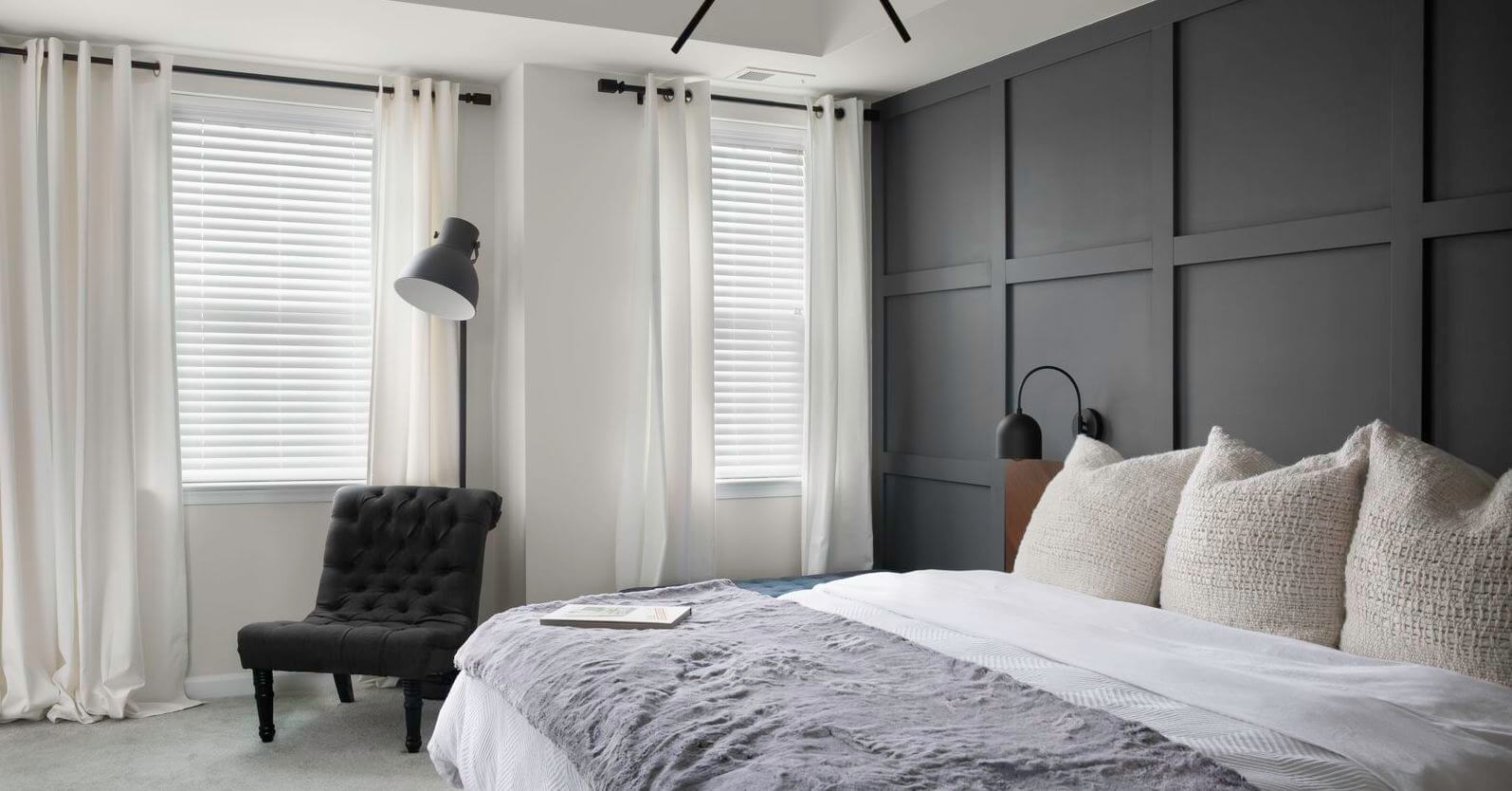
Long drapes puddle onto the floor for an elegant effect.
Stationary drapery panels are trending lately. The idea is that you have curtains or drapes in a very small width to serve as a decorative frame for a window that either doesn't need to provide privacy or that already has another window treatment, like a blind or a shade. In that instance the blind or shade will cover the window for practical purposes and the curtains or drapes will only be a decorative frame and will not function, you would never close them.
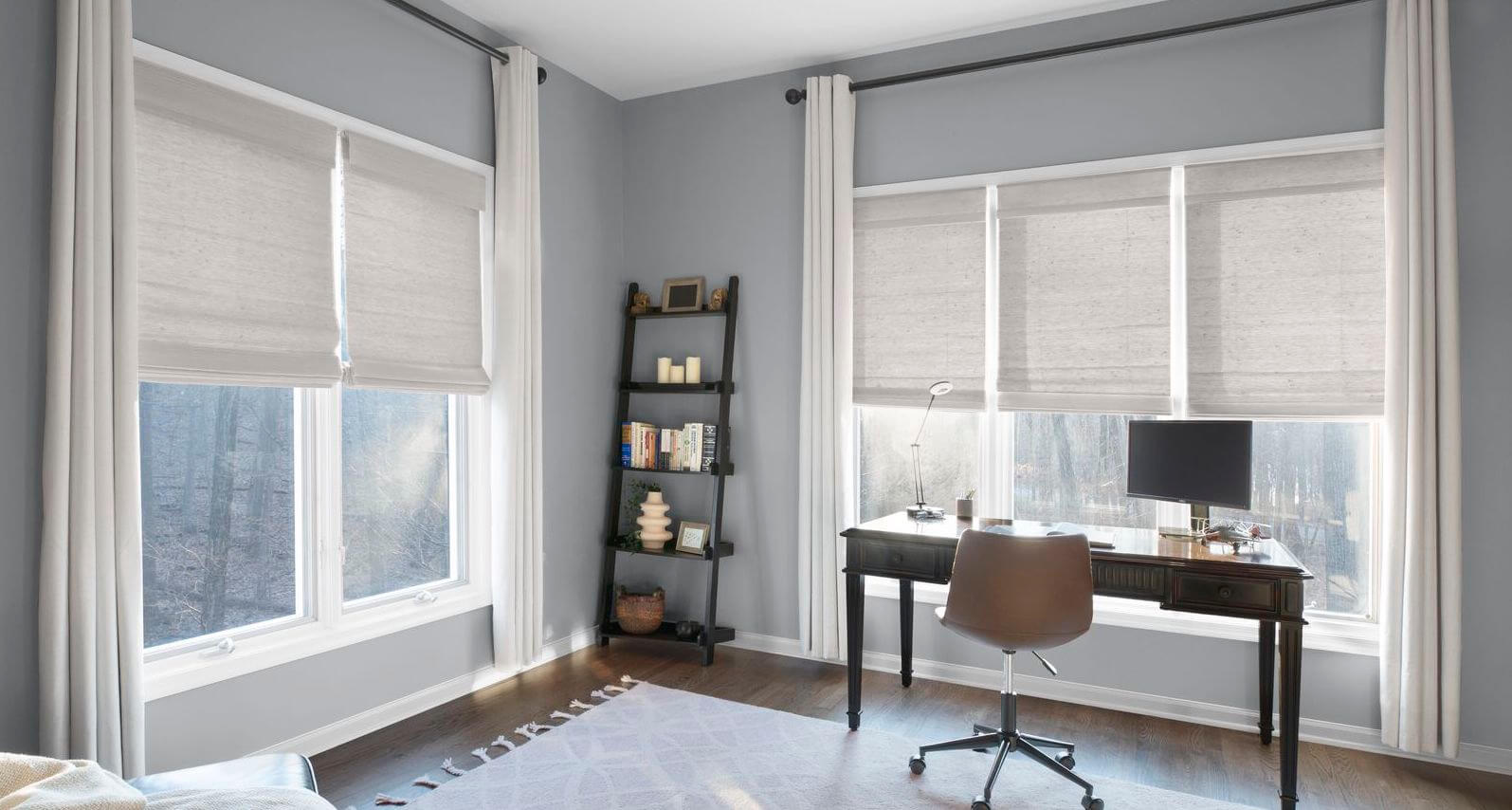
Decorative "static" curtains create a lovely frame for windows.
Another stylish approach is the understated look of perfectly tailored curtains or draperies, which is great for small rooms and cozy spaces. In such a case it's better to install the curtain rods just above the frame and add fifteen centimeters to each of the outsides and the bottom of the frame. The custom drapery will enhance the window without overloading the wall. We always insist on a wall-mounted curtains, rather than mounting inside your window frame, so that your view is unobstructed when you want it and your window is totally covered when you want privacy or to reduce the glare of the sun.
Darkening the Room with Curtains and Blinds
To achieve total darkness both day and night, we recommend curtains lined with a blackout material known as blackout curtains paired with blinds or shades that also blocks light. Curtains will stop light leaks on the sides of your window and if the blind or shade that they are paired with is blackout as well then you may not even need to close the curtains to get the room-darkening effect. In such a case you can buy curtains that are less full than if you were going to close them all the way. Our custom-made curtains come in widths as narrow as 12" and our custom-fit curtains come in standard widths of 50" per panel. Not sure what width is best for your curtains or drapes? Our trained design consultants would be happy to assist you and answer questions about your specific needs.
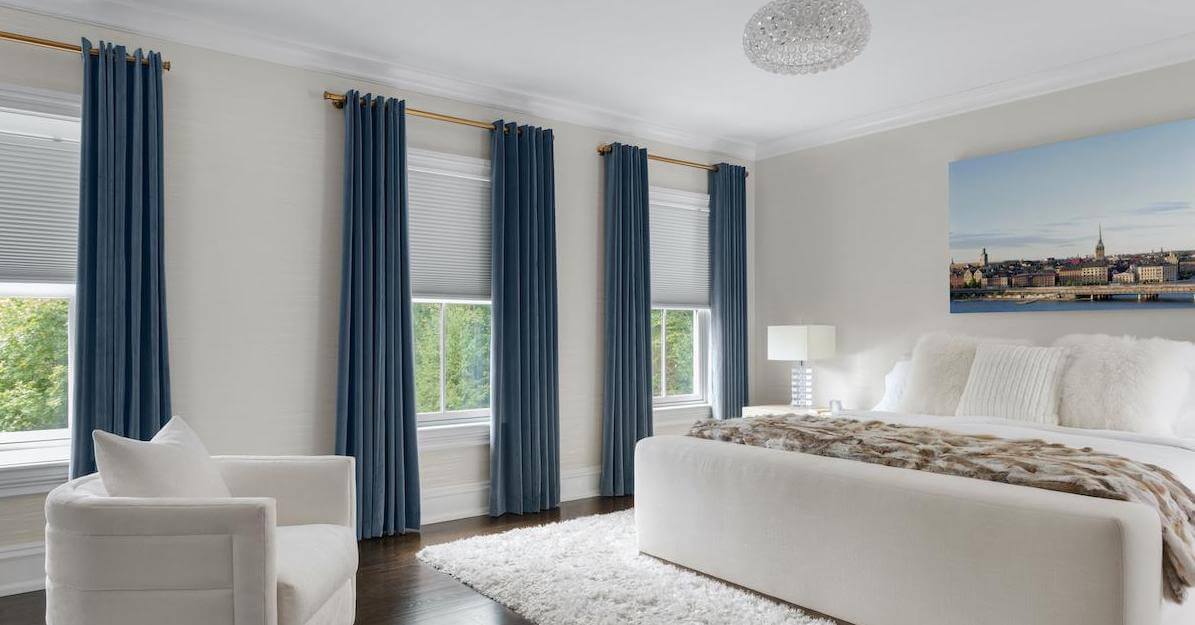
Drapes with blackout lining cover the light gaps of shades.
If you have an existing blind that only provides privacy, or is only decorative, and you want to further darken the room, simply add a curtain with an opaque lining and you can have the room dark when you like or let light in (while keeping your privacy) during the day. The rod and curtains should extend on the the right and left sides of your window by 10-20 inches, to optimally reduce light gaps. Regarding the height, we suggest installing the curtain rods at the midway point between the top of the frame and the ceiling, or higher.
How to Measure Curtain Length
Now that you know your needs and have an idea of the standard curtain lengths, it's time to measure. Again we recommend that you decide where the rod will be mounted first of all, then measure from the top of the curtain rod to where you want the curtains to end. For example, if you want the curtains to end just above the floor, measure from the top of the rod to just above the floor. Your design consultant will want to know the finished length of your drapes from rod to where you want them to stop. Do not measure all the way to the floor if you do not want the drapes or curtains to go all the way to the floor. If you want a puddled curtains look add a few inches on to the bottom of the drape measurement. Remember, the more you add, the more dramatic the effect will be. Consider 1-4 inches as a good starting point. Make sure to measure each window individually as sizes may vary, even on two windows that appear identical.
How to Measure Curtain Width
When measuring the width be sure to measure from the outside edge of the window molding from the left to the right side. Add an extra 4-8 inches on each side to allow for the curtains to cover the window properly and for a more luxurious look. A design consultant in one of our showrooms or even over the phone can help you decide how much to add to the width, depending on how much fullness you need to match the look of your decor. We recommend that you extend your rod on the left and right of your window for very large windows. Since large windows will require a lot of fabric to cover them, you will want that fabric to collect on the sides in a way that does not block your view and incoming light when they are pushed open, this requires extra rod space on the left and right sides. For small windows it is also important not to cover too much of the window with the stacked fabric when the curtains or drapes are pushed over into their open position.
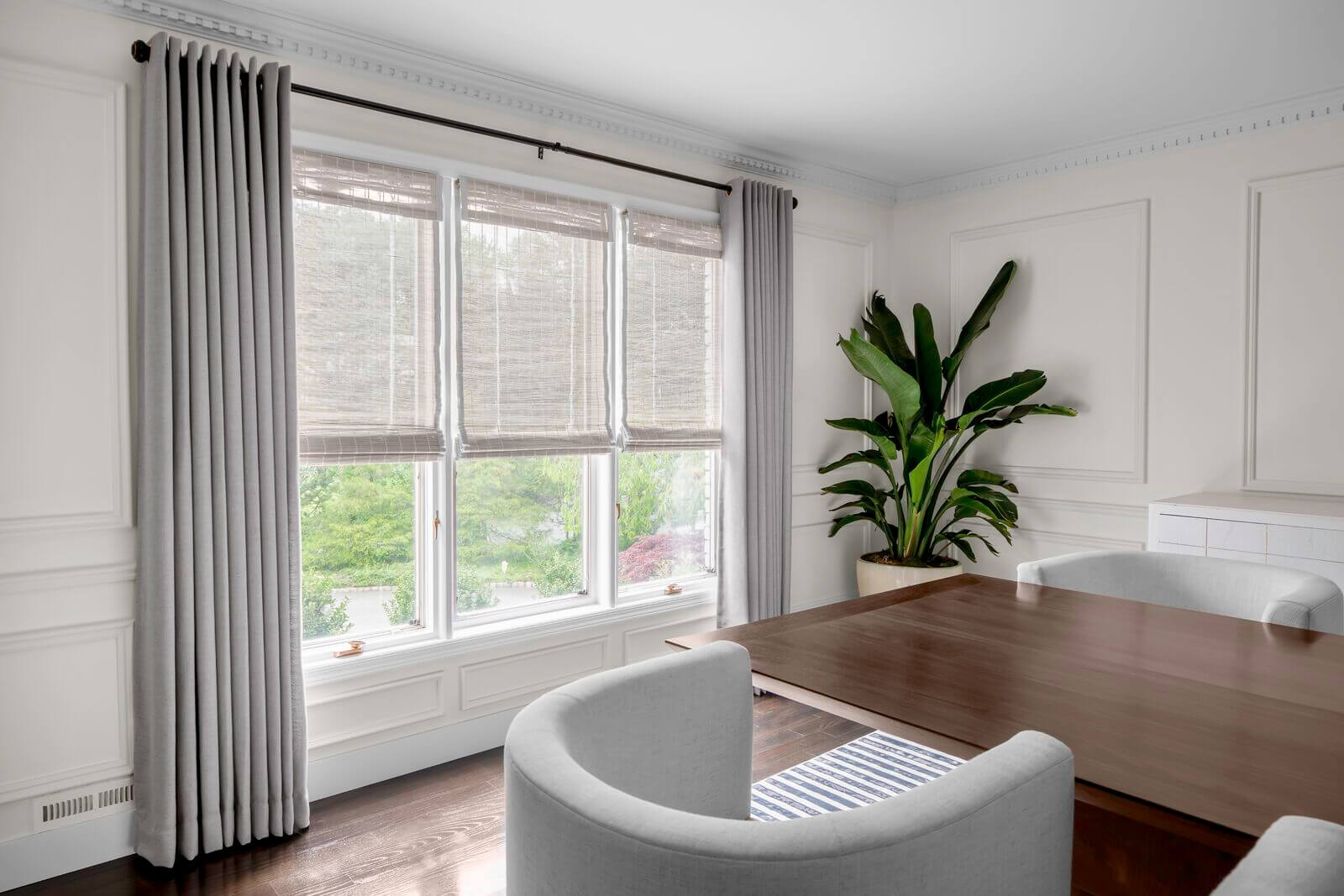
A longer rod will expose the entire window when curtains are open.
For expert guidance and professional measure and installation, visit a nearby Blinds To Go showroom!
Choosing the right size for your curtains is an important part of decorating your space. Follow our guide for curtain lengths and rules for measuring to choose the right size. Defining your needs and measuring your windows correctly will help you get the exact look that you want. If you're unsure about what size curtains to choose or have a unique situation, consider custom length curtains. At Blinds To Go our design consultants have all the answers and are happy to help in any of our stores or call us at +1 (800) 254-6377.
Sign Up & Save $50 OFF
By filling out the above information, I agree to receive promotional emails and other communications from Blinds To Go. I understand I may unsubscribe at any time. Contact us for details or view our Privacy Policy

